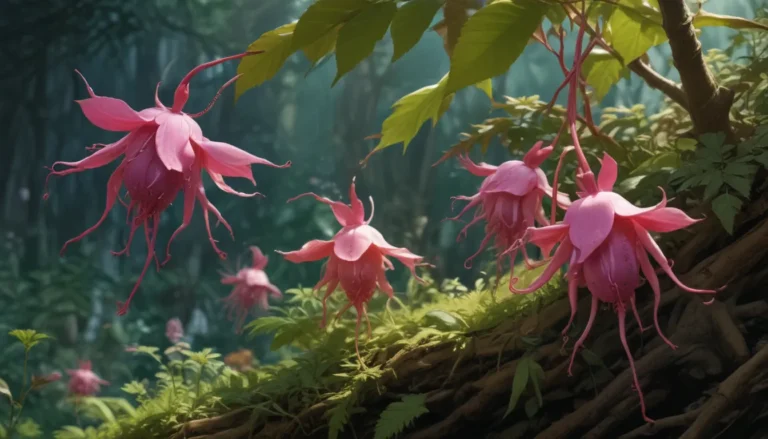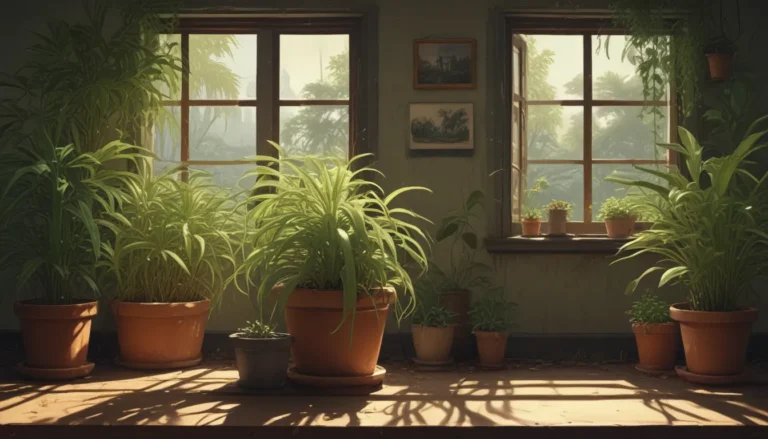The Ultimate Guide to Growing and Caring for Himalayan Honeysuckle

Himalayan honeysuckle, scientifically known as Leycesteria formosa, is a stunning addition to any garden. This unique plant, native to the Himalayas, offers a delightful mix of sweet-smelling white flowers and delicious caramel or toffee-flavored berries.
In this comprehensive guide, we will explore everything you need to know about cultivating and caring for Himalayan honeysuckle, from propagation to pruning, and why this robust shrub is a must-have in your landscape.
Unveiling the Beauty of Himalayan Honeysuckle
Himalayan honeysuckle, or Leycesteria formosa, boasts an array of distinctive features that set it apart from other honeysuckle plants. Here are some key characteristics of this captivating plant:
- Can be grown as a vine or a shrub
- Produces white flowers that descend from scarlet or purple bracts
- Berries have a flavor reminiscent of caramel or toffee
Originating from the Himalayas, this plant thrives in cool climates, requiring chilly nights for optimal health.
The Journey of Himalayan Honeysuckle: Cultivation and History
Once considered a noxious weed in certain regions, Himalayan honeysuckle, with its rapid growth and adaptability, has become a cherished addition to gardens, particularly in North America.
Notable highlights of its cultivation and history include:
- Native to the Himalayas
- Naturalized in southern England
- Winter hardiness in USDA Hardiness Zones 7-9
Nurturing Himalayan Honeysuckle: How to Grow
Growing Himalayan honeysuckle is a rewarding experience, given its low-maintenance nature and versatile growing conditions. Here are some essential tips for successful cultivation:
- Plant in well-draining soil under full sun
- Water regularly for the first two years after transplanting
- Prune in late winter for size control and rejuvenation
This undemanding plant is adaptable to various soil types and pH levels, making it suitable for a wide range of garden settings.
Cultivars and Varieties: Selecting the Perfect Himalayan Honeysuckle
While Himalayan honeysuckle offers distinct charms in its natural form, cultivars like ‘Golden Lanterns’ and ‘Jealousy’ present unique variations that add depth to your garden landscape.
Explore these cultivars to find the perfect fit for your gardening needs:
- ‘Golden Lanterns’: Features amber-tinted new growth and yellow foliage
- ‘Jealousy’: Exhibits upright growth with yellowish leaves turning purple in fall
These cultivars offer additional nuances and are well-suited for Zones 6-9, providing a touch of elegance to your outdoor space.
Pest-Free Paradise: Managing Pests and Disease
Unlike its counterparts in the Caprifoliaceae family, Himalayan honeysuckle is known for its resilience against pests and diseases. Enjoy a worry-free gardening experience with minimal interventions required to keep this plant thriving.
Delighting in Himalayan Honeysuckle: Best Uses and Benefits
The versatility of Himalayan honeysuckle extends beyond its aesthetic appeal to encompass a range of benefits and applications in your garden:
- Ideal for cottage gardens, perennial beds, borders, and woodland settings
- Attracts a variety of birds, including hummingbirds
- Edible berries with a delightful toffee-like flavor
Embrace the endless possibilities of incorporating Himalayan honeysuckle into your landscape and enjoy its visual splendor and irresistible berries.
Quick Reference Growing Guide
For quick reference, here’s an overview of key details about growing and caring for Himalayan honeysuckle:
- Plant Type: Woody shrub
- Flower/Foliage Color: White with purple bracts/green
- Hardiness (USDA Zone): 7-9
- Height: 6 feet
- Spread: 6 feet
- Exposure: Full to partial sun
- Water Needs: Low, when established
Use this guide as a handy reference to ensure optimal growth and maintenance of your Himalayan honeysuckle plants.
Sweet Berries and Vibrant Blooms: A Garden Delight
In conclusion, Himalayan honeysuckle is a delightful addition to any garden, offering a unique blend of sweet berries, vibrant flowers, and easy-care maintenance.
Whether you’re a novice gardener or a seasoned enthusiast, cultivating Himalayan honeysuckle is a rewarding experience that brings beauty and biodiversity to your outdoor space.
Are you ready to grow your own Himalayan honeysuckle? Share your gardening adventures in the comments below, and let us know how this charming plant has enriched your garden.
For more insights on growing flowering shrubs and enhancing your garden landscape, explore our curated guides on azaleas, mountain laurel, and bottlebrush plants.
Transform your garden into a vibrant sanctuary with Himalayan honeysuckle, a versatile plant that brings joy to both humans and wildlife alike.
By applying a conversational tone, adding informative sections, and providing valuable insights, this expansive guide on growing and caring for Himalayan honeysuckle offers readers a comprehensive resource for enhancing their gardening experience. The interactive format, detailed information, and rich content aim to engage and educate readers, inspiring them to cultivate and appreciate this captivating plant in their own outdoor spaces.





